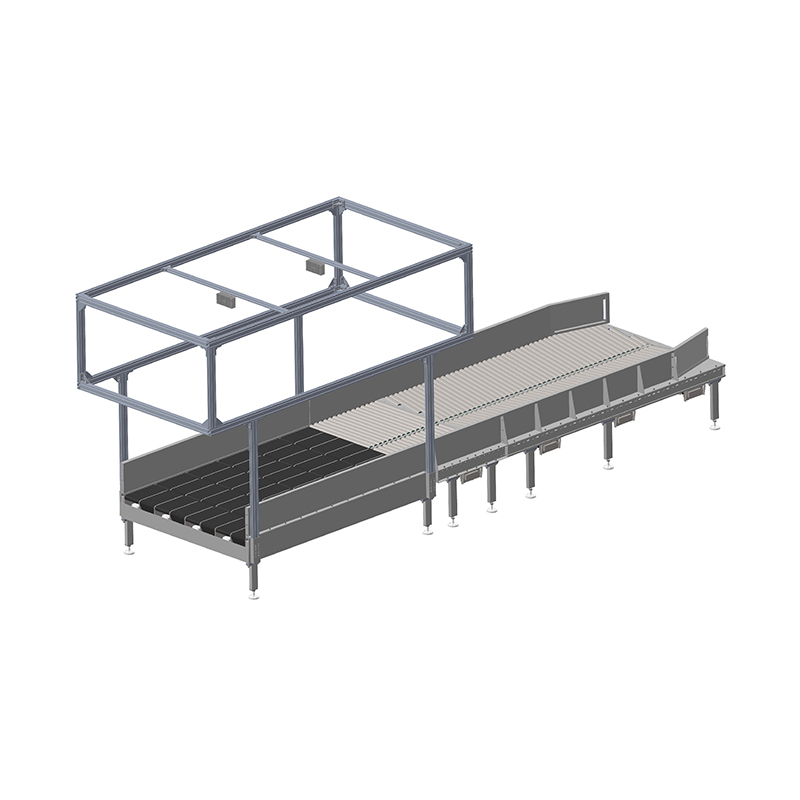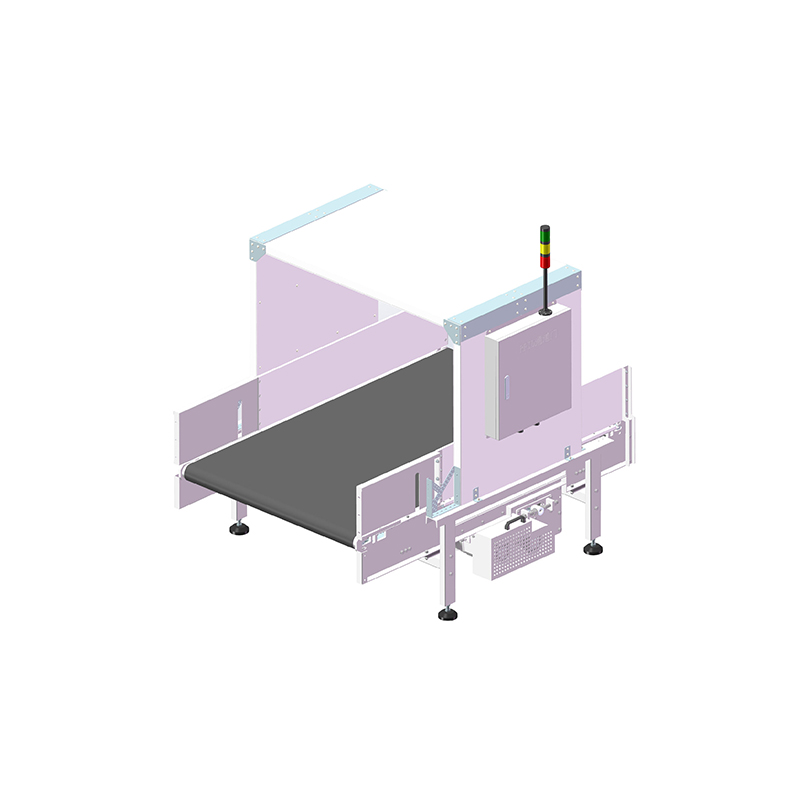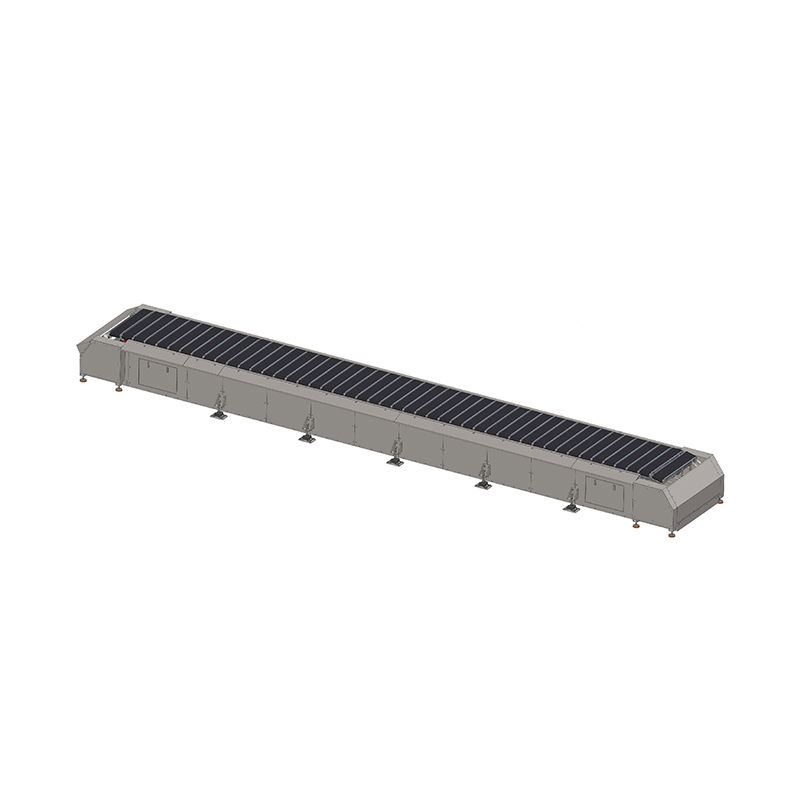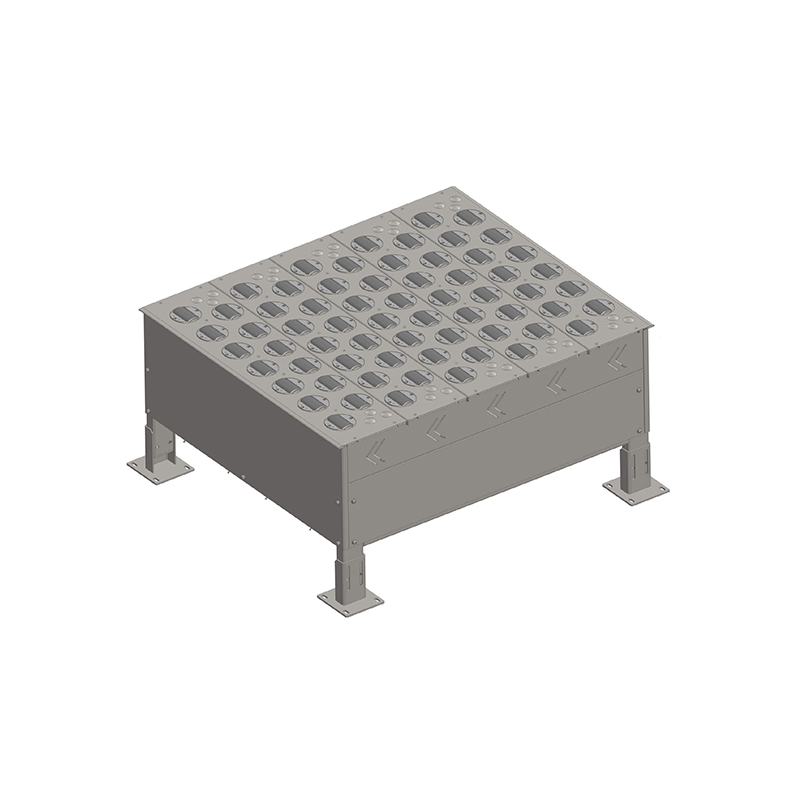Dynamic testing of a new narrow-band sorter demonstrates breakthrough stability despite high-intensity overtime and long-term operation.
Release Time : 2025-08-12
—Reshaping the Efficiency of Logistics Automation with Technological Innovation
With e-commerce order volumes continuing to surge and logistics timelines approaching minute-by-minute levels, the stability of sorting systems has become a crucial factor in determining the throughput capacity of warehouses. Recently, a narrow-belt sorter with a completely new structural design delivered impressive results in dynamic testing: operating continuously for 72 hours at high intensity, exceeding the daily processing capacity by 20% of the design limit, and achieving a near-zero equipment failure rate. This achievement not only validates the reliability of next-generation sorting technology but also reveals the evolutionary path of logistics automation equipment from "usability" to "durability."
I. Test Background: "Extreme Stress Testing" of Logistics Sorting
Conventional narrow-belt sorters, limited by their mechanical structure and control algorithms, often suffer from belt misalignment, sorting errors, and motor overheating when handling large packages, odd-shaped items, and frequent starts and stops. The technical team of a leading logistics company revealed, "During major promotional events like 'Double 11,' downtime losses caused by sorting line failures can reach tens of thousands of yuan per hour, making stability an invisible ceiling that restricts efficiency."
The newly designed narrow-band sorter tested in this study addresses three key industry pain points through innovations:
Dynamic load fluctuations: This simulates an e-commerce warehouse experiencing a jump in order volume from a daily average of 50,000 pieces to a peak of 200,000 pieces per day;
24-hour continuous operation: This verifies equipment durability through a "stop-the-machine-while-operators" mode;
Adaptability to complex packages: This tests sorting accuracy by introducing a 30% ratio of irregularly shaped items (such as extra-long pipes and irregular packaging).
II.Technical Decoding: How does the new structure achieve "increasing stability with use"?
Test data shows that the equipment maintained a sorting accuracy rate above 99.97% over 72 hours of operation, with temperature fluctuations in key components (such as the drive motor and belt tensioner) controlled within ±3°C. Its stability stems from three core technological breakthroughs:
1. Modular Lightweight Frame: From "Rigid Resistance" to "Flexible Cushioning"
Traditional sorting machines utilize a monolithic steel frame, which is prone to metal fatigue under high-frequency vibration. The new generation of equipment, however, utilizes an aircraft-grade aluminum alloy frame with a honeycomb shock-absorbing structure. Finite element analysis optimizes mass distribution, resulting in a 40% reduction in weight and a 65% reduction in vibration amplitude. A test clip shows that when handling a 15kg package, the vibration displacement of the main beam of the traditional model reaches 8mm, while the new model only experiences 2.3mm, significantly reducing mechanical wear.
2. Intelligent Dynamic Speed Control System: Enables the Equipment to "Sense" Load
By embedding a pressure sensor matrix beneath the conveyor belt, the system monitors package weight and distribution in real time, dynamically adjusting motor speed and torque. For example:
When a continuous stream of small, light items is detected, the system automatically switches to energy-saving mode (reducing speed by 30% and reducing energy consumption by 22%).
When encountering large or odd-shaped items, the drive wheel accelerates 0.5 seconds in advance to prevent belt slippage.
Combined with machine vision to identify package boundaries, the system automatically adjusts the sorting angle, reducing the sorting error for odd-shaped items from ±15mm to ±3mm.
3. Self-Repairing Belt Technology: Eliminate the "Deviation-Stop-Adjustment" Cycle
To address the industry's persistent problem of belt deviation, the R&D team innovatively employed a variable-diameter guide wheel combined with a laser alignment system:
The guide wheel is coated with a polymer wear-resistant layer, automatically adjusting its contact radius based on belt tension.
A laser sensor scans the belt edge 100 times per second. If deviation exceeds 2mm, the fine-tuning motor is immediately triggered to correct the position.
In testing, the equipment maintained belt deviation within 1mm after 48 hours of continuous operation, completely eliminating jams and downtime caused by deviation.
III. Long-Term Value: Efficiency Transformation from "Test Field" to "Real-World Operation"
This equipment has been deployed in a cross-border logistics hub for three months, and data confirms that its stability advantages translate into significant economic benefits:
Reduced Labor Costs: Traditional sorting lines require downtime every two hours to check belt condition. The new model is "maintenance-free" throughout its entire lifecycle, eliminating the need for two inspectors per line.
Optimized Energy Consumption: The dynamic speed control system reduces energy consumption per sorted item from 0.08 kWh to 0.05 kWh. Based on an annual processing capacity of 100 million items, this translates to an annual electricity bill savings of over 600,000 yuan.
Increased Capacity Flexibility: During the "618" shopping festival, the equipment achieved a peak daily processing capacity of 280,000 items, a 40% increase over the design value, with a failure rate of only 0.3%.
IV. Industry Implications: The "Stability Economy" Era of Automated Equipment
As the logistics industry shifts from "scale expansion" to "lean operations," equipment stability is no longer just a technical parameter but a core indicator directly linked to ROI. This test demonstrates:
Innovative structure does not equal complexity: Modular design and intelligent algorithms reduce equipment complexity while improving reliability.
Long-term operation is the only true test of truth: Issues revealed during 72 hours of continuous testing provide a better guide to technological iteration than laboratory data.
Both stability and efficiency are achieved: The new model achieves a 15% increase in sorting speed while reducing energy consumption by 22%, overturning the conventional wisdom that "energy saving equals speed reduction."
From "usability" to "durability," and from "manual maintenance" to "self-sensing repair," the dynamic testing results of the newly designed narrow-band sorter mark the official entry of logistics automation equipment into the "stability economy" era. When technology can confidently handle extreme pressures, every heartbeat of the logistics hub will be more robust and powerful—the invisible cornerstone that supports the efficient operation of the global supply chain.








